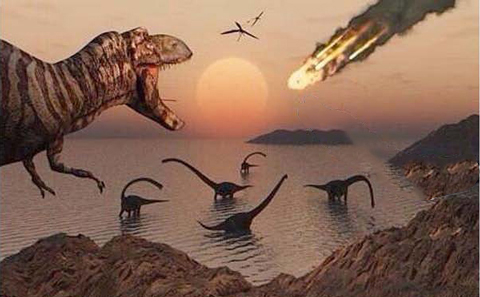What is Background Extinction?
Amongst the numerous emails that we receive from schools and schoolchildren every day, we were sent a query by a UK-based, Key Stage 2 teacher, who raised a question surrounding the teaching of natural selection, Darwinism and evolution with her Year 6 class. The teacher had come across the term “background extinction”, but was unsure as to its meaning, could we help?
Bolide Impacts May Have Contributed to Mass Extinctions But What is Background Extinction?

Defining Background Extinction
If ideas about natural selection are correct, then organisms in ecosystems are all competing against each other for resources. Such competition for finite resources such as space, water and food will lead to some organisms being more successful than others. Ultimately, those less competitive organisms within a population will not survive to reproduce. The same idea applies on a species level, some species will be more successful than other species.
Eventually, in the face of this competition, some species will die out. These extinctions as a result of the operation of normal competition and natural selection are referred to as “background extinction”. These extinctions are also sometimes referred to as the “standard rate of extinction”.
It is estimated that something like 90% of all extinctions throughout the history of our planet have taken place during times of background extinction.
To read an article (2015), that looks at why Australia’s extinction rate might be higher than on other continents: The Extinction Rate in Australia is Higher than most Other Continents.
Background Extinction – Extension Activities
In order to help the teacher’s scheme of work with the Year 6 class, we set two extension activities linked to the theme of background extinction:
1). Could the school children draw a graph to represent mass extinction events that have occurred but also show on the same graph background extinction?
2). Have the children research The International Union for Conservation of Nature (IUCN), can they produce a non-chronological report on this organisation, its aims, objectives and what current conservation projects are being undertaken? There are plenty of on-line resources available including videos to support this type of independent enquiry and research.
Visit the Everything Dinosaur website: Everything Dinosaur.






Leave A Comment